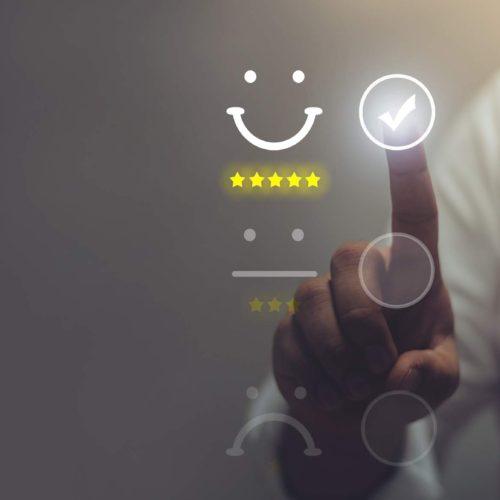When considering:
- Customer’s Need + Brand’s Need = Right message with the right execution.
- Customer’s Need only = Right message with a flawed execution.
- Brand’s Need only = Right execution with a flawed message.
The 80 / 20 rule works against us!
Influencer marketing is on the rise, with more and more brands realizing the power of influential voices, particularly in our increasingly social media driven world.
However, our appreciation of the power in these voices may be the very reason why it may not be the most effective marketing tool all the time. We do not challenge the status quo.
When influencers promote a brand, on average, 20% of the conversation is about the brand while 80% of them vary from topic to topic that have the least to do with selling the brand.
There’s more to influencer marketing than just paying the best-known celebrity you can, to say nice things about your brand. You can flip the 80/20 ratio to your favour by asking the following questions;
- Which are the most influential voices in your target communities?
- How can you reach them and turn them into advocates?
How should you be focusing your efforts to maximize your influencer campaign performance?
Top 3 Pitfalls of Influencer Marketing:
- Choosing numbers and status over relevance: One of the benefits of influencer marketing is the ability to access more targeted audiences. Influencers with a lot of popularity and a lot of followers are not necessarily the best to target certain demographics, as their audience might be too wide for a particular brand or product. It is better to choose an influencer who is relevant to your target audience, since different influencers attract different people. Constantly keeping track of engagement levels to see if the influencer’s content is reaching and resonating effectively with their audience is more important that how many followers they have.
- Ignoring the customer’s ‘actual’ need: Companies tend to ignore the needs of the customers by continually promoting their products while not paying attention on how to fine tune their product. There is no amount of marketing that can fix a flawed product / service.
- Making influencers the entire campaign strategy: When placing ‘a person’ as the face of your campaign, it becomes increasingly difficult to build independence in your message without the help of influencers. Brands need to create strategies whereby their product / service is the pillar of the message not the influencer. The influencers should enhance your voice as an execution mechanic within a bigger picture.
THE SCIENCE OF INFLUENCE
Identifying those people within the communities you’re looking to target who are the most vocal, the most active, and who are generating the most response and impact to your campaign / strategy is the sweet spot that every brand craves for.
How can we understand this science? It’s a combination of the customer’s core need and the brand’s core need.
CUSTOMER’S NEED:
Firstly, it’s important to note before considering an influencer to promote your product/service, you need to understand what the core need amongst your customer is.
If there is an issue with consideration or trial, influencers are beneficial.
If there is an issue with distribution or quality of the product it is advisable to fix your product/service offering before promotion through marketing. Advertising a faulty brand, only works against you.
This helps you determine the RIGHT key message that is in touch with what the market wants / needs / should expect.
BRAND’S NEED:
Secondly, identifying the objective of your campaign is key. Your need would be broken either into:
- Pushing the unique selling points of your product / service.
- Pushing top of mind awareness of overall product / service.
The former requires technically proficient influence and the latter requires general lifestyle influence.
This helps you determine the right execution for your strategy.
THE SCIENCE OF INFLUENCE
A great Technically Proficient influencer is made up of:
= Good CV + Personable Quality + Good content creator + Historical Performance.
Their CV is determined by their audience interests (the type of audience they reach) & their bio.
A great General Lifestyle influencer is made up of:
= Good content creator + Brand safety + Historical performance + Personable Quality + Good match of their audience’s attributes to customer’s core needs
Matching their followers’ attributes to their target audience’s core needs means that the content the influencers are relaying will be relevant to the TA the brand is targeting and thus the key message is authentic.
Top 3 things to look out for
- Our customers are becoming smarter and smarter
Consumers are becoming increasingly aware of their consumer rights and educated on marketing tactics. Gone are the days when they would buy a product simply because a famous person said how amazing it is.
They are beginning to challenge the knowledge and expertise that influencers bring to the table. They are challenging the ethics behind these brand promotions and are challenging companies themselves to re-evaluate their influencer marketing tactics.
- . A New Dawn of Micro-influencers
Micro-influencers often have very high engagement with their fan-bases and are often over-looked by brands in the social media campaigns they are pursuing. They have specific niche audiences and are deeply connected to them.
How to identify them:
- Followers between 1,000 and 50,000
- Great engagement levels of 7% – 15%. Average engagement rate is a minimum of 6%. They have more buying conversations and their recommendations are more direct and specific to the interests of those already following them. i.e. They most probably flip the 80 / 20 rule in your favor.
- They are authorities in niche groups.
For a brand to achieve the best possible Return On Investment, within a campaign, it’s ideal to hire a group of micro-influencers to increase the reach of the campaign.
- The fall of the celebrity influencer
Consumers and brands are starting to challenge the ‘celebrity influencers.
How to identify the ‘celebrity influencer’:
- More than 400k followers
- Engagement rates of max 3%
- Continually promote brands that are not aligned to what their personal brand strategy is.
Fake and fraudulent influencers are a serious issue for advertisers and a major threat to their marketing budgets. Companies have begun analyzing this by measuring the quality of influencers’ following. This is done through measuring the authenticity of an influencer’s followers by comparing their total following by the average engagement they receive. This is because, it’s difficult to actually tell whether an influencers high following is a true reflection of whether they are a good influencer or not for your brand, in terms of the engagement they will bring.
Examples of links that measure true following: https://socialblade.com/instagram/
Additionally, a high following lowers engagement levels and thus there is little conversation about the brand. Being over-commercialized reduces the integrity and authenticity of their message.
These are all factors that threaten the life span of the celebrity influencer
Final 3 things to consider
Working with influencers who do not connect with your brand and have not used or 1
- Content is king… and deserves to be treated as such.
Killer content creation is the surest way to guarantee a successful campaign. Influencers need to be inspired by the brands and challenged by their followers to create better content each time. Partnering with agencies in content creation results in a much better final product that is well-curated since the latter has product and customer knowledge while the former has the market and the art of connecting with them.
- Moving from transactional to relational
Influencer marketing used to be a one-off transaction, whereby the influencer is only contracted for a short period without a clearer understanding of their impact into the bigger picture. This results in a lower Return On Investment than expected. In 2019, brands will shift from transactional strategies to invest in creating long term partnerships with influencers. This results in the influencer learning as much as possible about the product or service they’ll promote so that they can provide knowledge that will add value to the consumers, raise their own credibility and provide ROI for the consumer.
- Agencies scaling influencer marketing in-house
Due to the rise of influencer marketing, agencies may need to begin sourcing influencers based on the objectives of clients and actively ‘selling’ the strategies to them. This is done after the Science of Influence is gotten right.
So, there you have it an in-depth analysis and overview of the “Science of Influence”. Hope you did enjoy the read and we look forward to providing you with more knowledge on how marketing should be carried out within the Kenyan Market.
From the Digital Agency that cares. Until next time peace and love.



